Is your Windows 10 or Windows 11 computer or device unable to load the operating system successfully? Is Windows reporting missing or damaged system files? If that’s the case, you should try to boot from a recovery drive and use the Startup Repair tool. It’s a very helpful tool that can repair your system and save you from having to reset or reinstall the operating system. Here’s how it works:
What is Startup Repair & What does it do on your computer?
Startup Repair is a tool designed to fix problems like missing or damaged system files used to load the Windows operating system. It can’t detect or fix hardware failures, nor does it help against virus attacks and the damage they do. Instead, it scans your computer or device for system issues (corrupt system files, invalid boot files) and then tries to fix the problem.
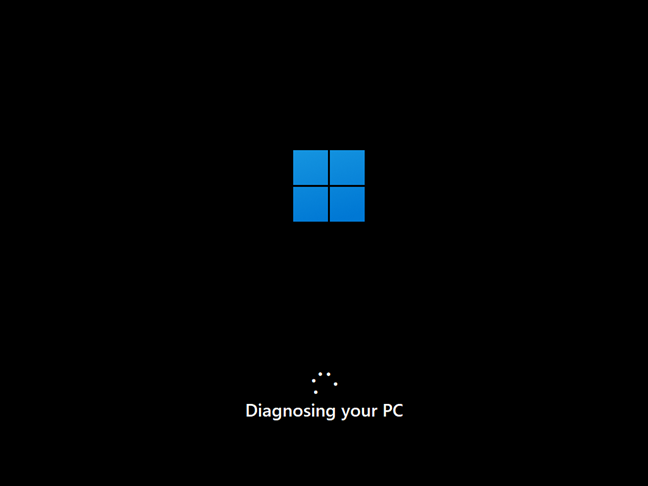
Startup Repair running on a Windows 11 computer
Obviously, this tool is safe, as it’s made by Microsoft itself, and it comes in handy when Windows fails to boot correctly.
How to launch Startup Repair
Obviously, your computer or laptop can’t boot Windows properly, which is why you’re trying to run Startup Repair. So, you can’t rely on your operating system to launch it. But, in order to use this tool, you can and should boot your Windows computer from a recovery drive, a System Repair disc, or a Windows installation drive.
Either one will work, and you can create any of them on a working Windows 10 or Windows 11 computer. If you don’t know how to do that, here are some tutorials that will guide you through the required steps:
- How do you create a USB Windows 10 recovery drive?
- How to create a System Repair disc in Windows 10 and Windows 11
- Windows 10 Media Creation Tool: Create a setup USB stick or ISO
- Windows 11 Media Creation Tool: Create a setup USB stick or ISO
Before we go any further, you should know that the steps you’ll have to follow and the options you’ll get are the same in both operating systems — Windows 10 and Windows 11 — so, to keep things simple, we’ll only use screenshots taken in Windows 11.
Once you have a recovery drive, a System Repair disc, or a Windows installation drive ready, boot from it. To do that, plug it in and start your computer or device. Immediately after your PC starts, press the boot device selection key from your keyboard. It’s usually the F12, F11, or the Escape key, but it could also be another one, depending on the manufacturer of your computer’s mainboard.
Doing that will make your computer display a boot priority selection menu. Use the arrow keys on your keyboard to select the USB recovery drive or the System Repair disc. Then, press Enter.
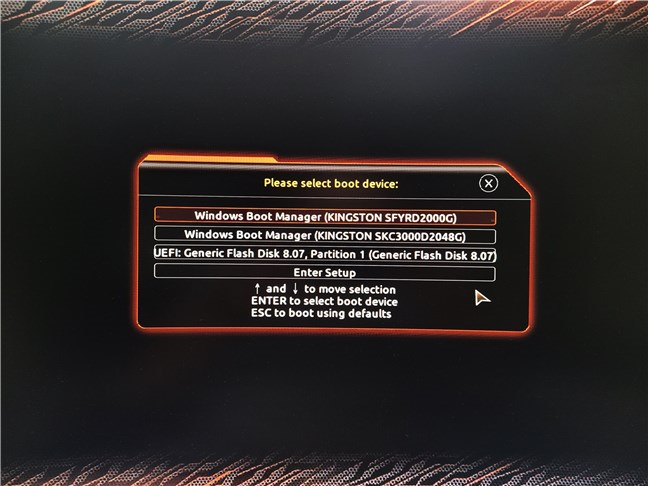
Boot your computer from a Recovery Drive, System Repair disc, or Windows installation media
TIP: Here’s how to boot from a USB drive on your PC.
How to launch Startup Repair from a USB recovery drive or a System Repair disc
Once your PC boots, you might be asked to choose the keyboard layout you want. If this happens, click or tap on the layout that matches your keyboard. To navigate between all the available keyboard layouts, press “See more keyboard layouts.”
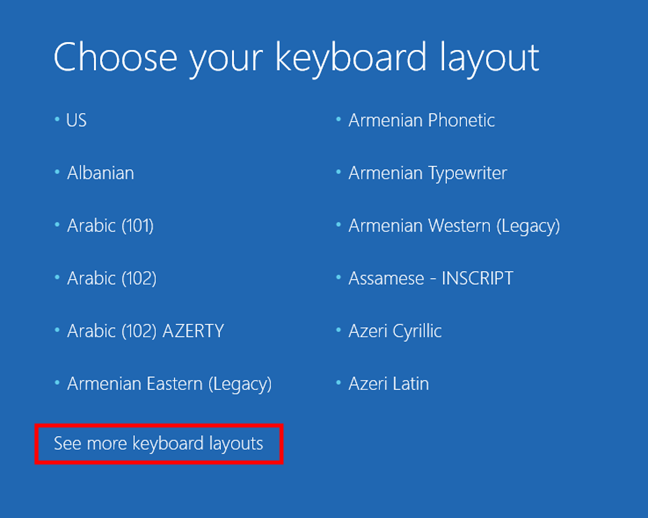
Choose your keyboard layout
The list of available keyboard languages is quite long, and you may have to scroll until you find the layout you want to use. Then, on the next screen, click or tap on Troubleshoot (Reset your PC or see advanced options).
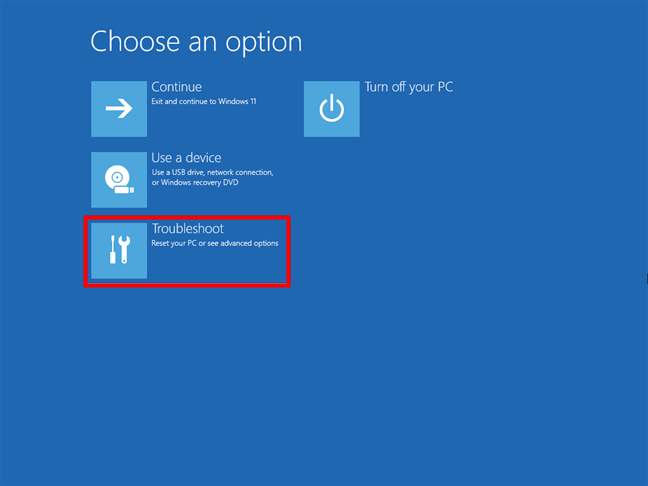
Select Troubleshoot
On the Advanced options screen, click or tap on Startup Repair (Fix problems that keep Windows from loading).
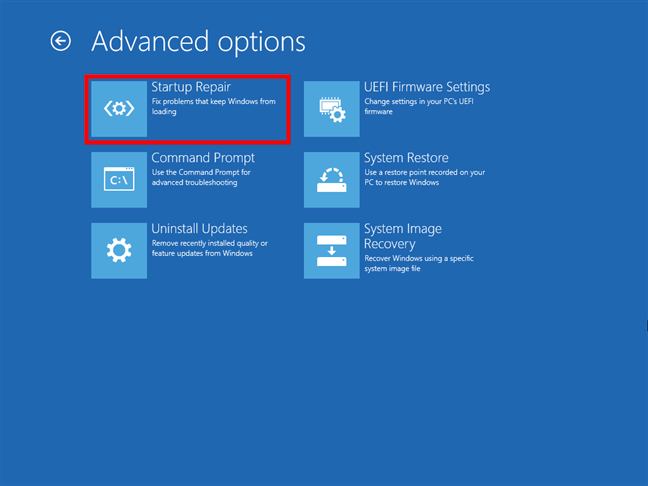
Launch Startup Repair
Now scroll to the “How to use Startup Repair in Windows 10 and Windows 11” section of this guide to see what happens next.
How to launch Startup Repair from a Windows installation drive
If you’ve chosen to boot your computer or laptop using a Windows installation drive, wait for the Windows Setup wizard to load. Select the language, time and currency format, and keyboard or input method you prefer, and press Next.
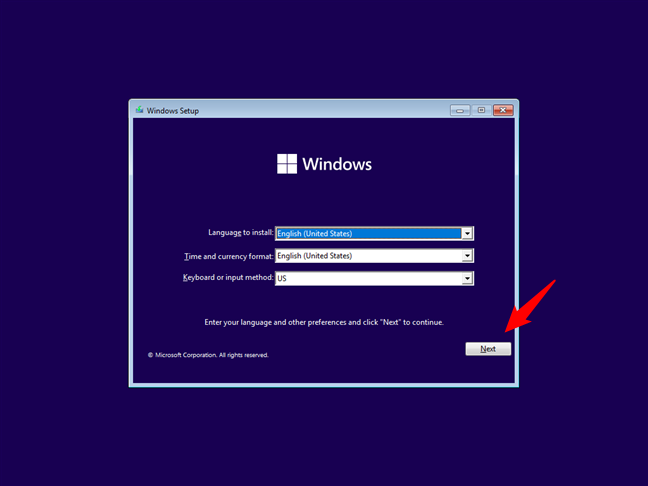
Complete the first step of the Windows Setup
On the second step, click or tap on Repair your computer at the bottom-left corner of the wizard. Alternatively, you can also press R on your keyboard.
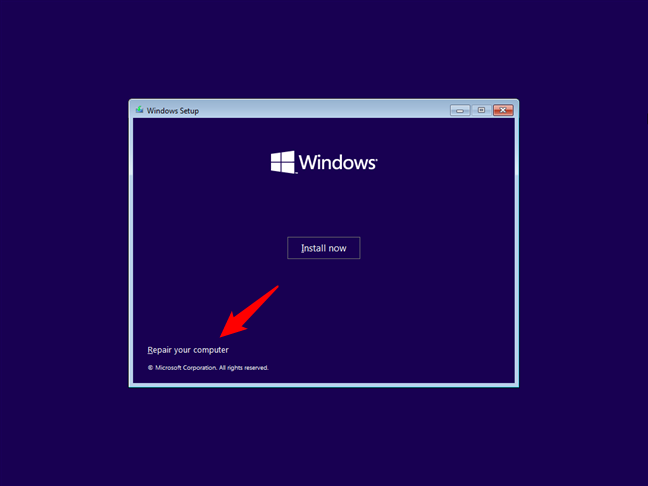
Repair your computer
On the Choose an option screen that shows up next, click or tap on Troubleshoot.
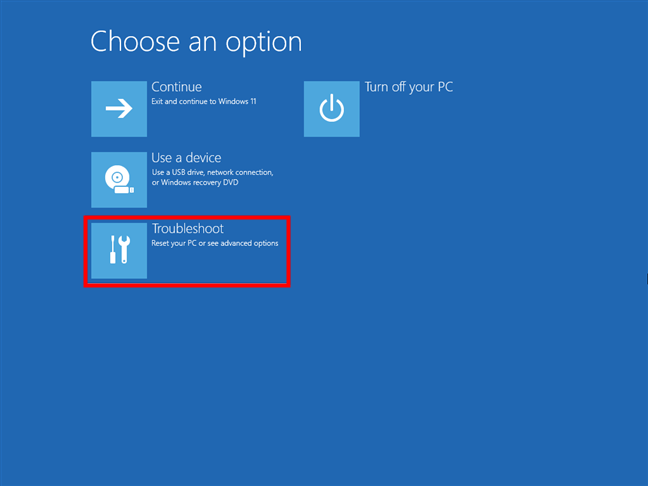
Choose Troubleshoot
This loads the Advanced options screen. On it, press the Startup Repair option to “Fix problems that keep Windows from loading.”
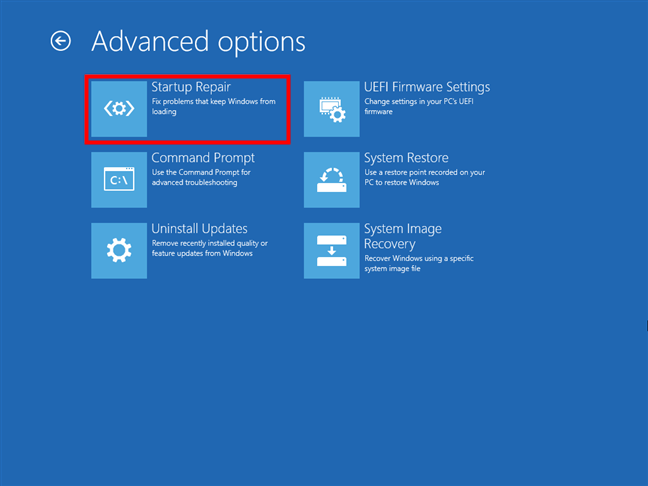
Initiate the Startup Repair
Next, here’s what the Startup Repair tool does:
How to use Startup Repair for Windows
Regardless of how you started Startup Repair, it will now automatically begin “Diagnosing your PC.”
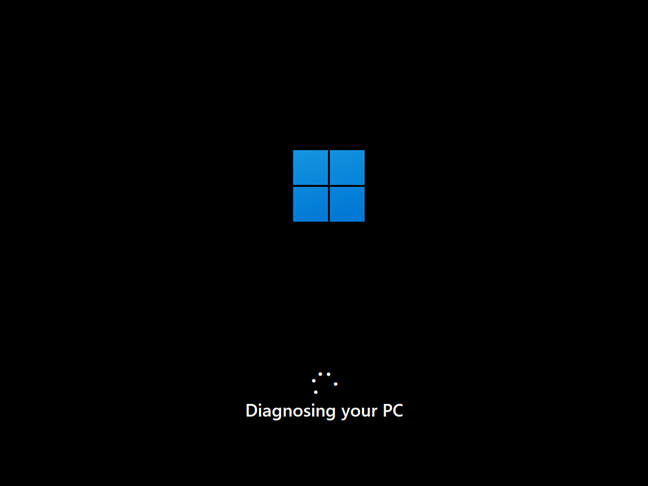
Startup Repair is Diagnosing your PC
After a while, if problems have been found, Startup Repair will attempt to repair them.
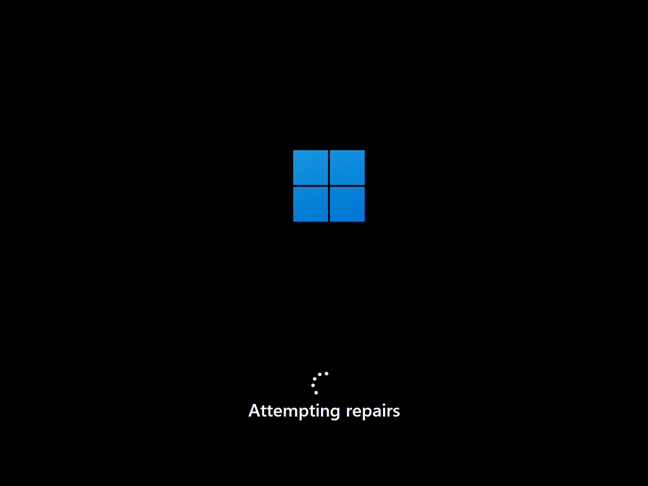
Startup Repair is Attempting repairs
If Startup Repair manages to repair your problems, you are informed, and you can restart your Windows computer or device and use it normally again.
On the other hand, if it can’t repair the problems, Startup Repair will tell you about it, and you’ll have the option to access the Advanced options screen again, where you can find other troubleshooting tools. Or… you can simply Shut down your computer.
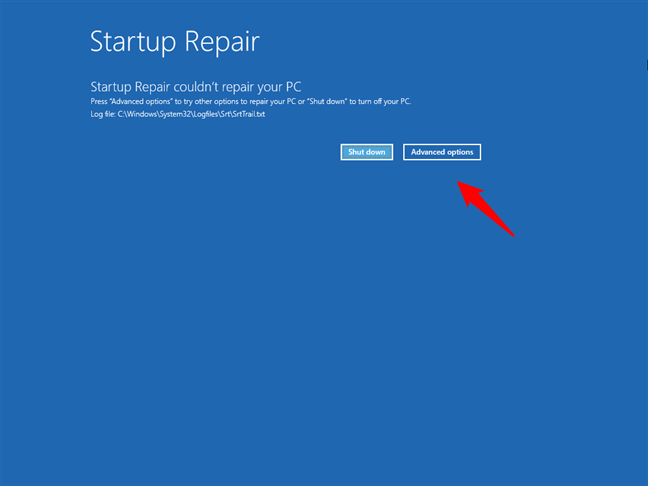
Startup Repair couldn’t repair your PC
In case you’re wondering about “How long should a Startup Repair take?” we can tell you that it should all be over in a few minutes on a modern computer with a solid-state drive. However, on a slow PC that still uses a hard-disk drive and a lot of boot issues, the whole process will take longer than that.
TIP: If nothing seems to work to make your computer boot normally, your MBR or EFI Bootloader might be broken. In that case, you might want to try troubleshooting them using the bcdboot or bootrec tools. You’ll find instructions here: Repair the EFI Bootloader or the MBR (Master Boot Record) for Windows.
Did you fix your computer using Startup Repair?
As you can see from this guide, Startup Repair is very easy to use. The slightly more complicated part is booting from the recovery media and starting the tool. And that’s why we have created this guide. Hopefully, many of you, our readers, will be able to solve your issues with Windows 10 or Windows 11 not loading correctly. Let us know in the comments section below if you have any other questions.
If a Windows 10 or Windows 11 computer encounters a startup error, it may activate an automatic repair process called “Preparing Automatic Repair.” This function is designed to identify and resolve problems that are preventing the operating system from starting correctly. However, sometimes the repair process itself can get stuck in a loop when the computer tries to fix a problem but fails to do so. This often leads to users seeing a “Diagnosing Your PC” message with no progress.
What Does Preparing Automatic Repair Mean?
| Feature | Description |
|---|---|
| Purpose | Diagnose and potentially fix issues preventing your computer from booting up normally. |
| Trigger | Automatic Repair is triggered when Windows detects errors during startup that might stop your computer from functioning properly. |
| Process | – Scans system files for corruption. – Attempts to repair corrupted files or identify the cause of the boot failure. |
| Outcome | – Successful repair: Windows boots up normally. – Repair failure: You’ll see an error message or be presented with recovery options. |
| Possible Causes of Automatic Repair | – Corrupted system files – Missing device drivers – Malware infection – Hardware problems (less common) |
| Duration | The time to complete Automatic Repair can vary greatly, ranging from a few minutes to over an hour depending on the severity of the problem. |
Resolving the Preparing Automatic Repair loop mainly involves a series of troubleshooting steps. These steps may include running system restores, booting in safe mode, undoing recent updates, checking for hardware issues, and if necessary, resetting the PC or performing a clean installation of Windows. For users grappling with such a loop, the goal is to break the cycle and restore normal boot functions without losing important data.
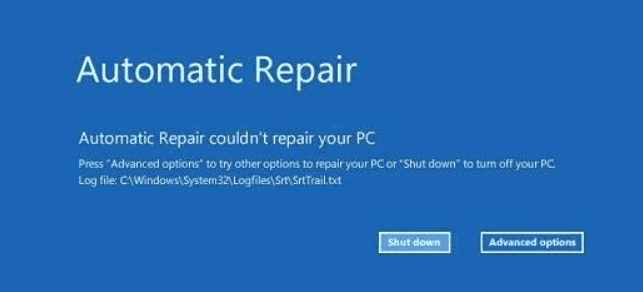
Understanding and Fixing the ‘Preparing Automatic Repair’ Issue
Sometimes, your Windows computer may get stuck in a “Preparing Automatic Repair” loop, preventing you from booting into the operating system. This issue can be frustrating, but there are several troubleshooting steps you can take to address it.
What is Automatic Repair?
Automatic Repair is a built-in Windows feature designed to automatically diagnose and fix problems that prevent the operating system from starting correctly. When your computer encounters critical errors, it will attempt to launch Automatic Repair.
Why Does the ‘Preparing Automatic Repair’ Loop Happen?
Here are some common reasons:
- Corrupted System Files: Missing or damaged system files can prevent your computer from booting correctly.
- Hard Drive Issues: Errors on your hard drive can cause problems during the booting process.
- Incorrect Boot Order: If your computer is configured to boot from the wrong device, it may get stuck in a loop.
- Recent Updates or Changes: New software installations or Windows updates can sometimes interfere with the boot process.
Troubleshooting Steps
Here’s how to break the “Preparing Automatic Repair” loop:
- Force Shutdown and Restart: Power off your computer by holding the power button for a few seconds. Restart it, and see if it boots normally. Repeat this step a few times.
- Access Advanced Startup Options: If the problem persists, try to boot into Advanced Startup Options:
- Force-shutdown the computer three times during startup to trigger this mode.
- Select “Troubleshoot” -> “Advanced Options.”
- Startup Repair: From Advanced Options, select “Startup Repair” and let Windows attempt an automatic fix.
- System Restore: Use a previously created restore point to return your system to an earlier working state.
- Reset Your PC: This option reinstalls Windows while giving you the choice to keep or delete your personal files.
Advanced Fixes (if the above steps fail)
- Rebuild Boot Configuration Data (BCD): This involves using Command Prompt within the recovery environment.
- Run CHKDSK: Use the CHKDSK utility to check for and fix disk errors.
| Troubleshooting Method | Instructions |
|---|---|
| Force Shutdown and Restart | Hard press the power button for a few seconds, then restart. Repeat this process 2-3 times. |
| Access Advanced Startup Options | Force-shutdown during startup three times to trigger this mode. Select “Troubleshoot” -> “Advanced Options” |
| Startup Repair | Select “Startup Repair” from Advanced Options and let Windows attempt a fix. |
| System Restore | Use a restore point from Advanced Options to revert to an earlier state. |
| Reset Your PC | Select “Reset this PC” from Advanced Options (choose keep or delete files). |
Important: If you’re not comfortable with advanced troubleshooting, consider seeking professional technical assistance to avoid further damage to your system.
Key Takeaways
- Automatic Repair is a Windows feature designed to fix boot-up issues.
- A loop can occur when Automatic Repair fails to resolve the problem.
- Troubleshooting can involve various repair strategies and may require a fresh installation.
Understanding Automatic Repair
When Windows encounters a problem during startup, Automatic Repair kicks in as a first-line remedy. This built-in tool attempts to fix common issues that prevent the system from booting properly.
Automatic Repair Loop
Sometimes, instead of solving startup issues, Automatic Repair can fall into a continuous loop, leaving users stuck. This loop often manifests as a persistent “Preparing Automatic Repair” or “Diagnosing Your PC” message. In other cases, the loop might end with “Automatic repair couldn’t repair your PC,” after which the system attempts to restart and enters the loop again. The root of this problem often lies in corrupt system files, registry errors, or faulty hardware drivers.
Common triggers of the Automatic Repair loop can include:
- Sudden power losses or improper shutdowns
- Malware or viruses
- Corrupted boot or system files
- Faulty updates or driver installations
What to Do If “Preparing Automatic Repair” Doesn’t Work
| Difficulty | Action | Description |
|---|---|---|
| Easy | Force Restart | 1. Hold down the power button for at least 10 seconds to completely shut down your computer. 2. Wait for a few seconds and then press the power button again to restart. |
| Easy | Boot into Safe Mode | 1. While your computer restarts, try repeatedly pressing a function key like F4, F5, or F8 depending on your device to enter the boot menu (consult your manufacturer’s manual if unsure). 2. Look for an option like “Safe Mode” and select it to boot with minimal programs and drivers. 3. In Safe Mode, you might be able to troubleshoot the issue or perform a system restore. |
| Moderate | Disable Automatic Repair (For Advanced Users) | Warning: This method involves editing system files and carries some risk. Only proceed if you are comfortable. 1. You’ll need a Windows installation media or recovery drive. Boot from the media and choose “Repair your computer” option. 2. Navigate to Troubleshoot > Advanced Options > Command Prompt. 3. Type the following command and press Enter: bcdedit /set {default} bootstatus policy ignore 4. Restart your computer. Automatic Repair should be skipped. 5. Now you can try other troubleshooting methods or reinstall Windows. |
| Difficult | Refresh/Reset PC or Reinstall Windows | If the above methods fail, you may need to reset your PC. This will erase your data and reinstall Windows. 1. Boot into the Windows Recovery Environment (refer to instructions for “Disable Automatic Repair”). 2. Choose “Troubleshoot” and then “Refresh this PC” or “Reset this PC”. “Refresh” keeps your personal files but removes apps and settings. “Reset” removes everything. 3. Alternatively, you can choose “Reinstall Windows” to completely wipe your drive and install a fresh copy of Windows. Important: Back up your data before using these options. |
Components of Automatic Repair
When Automatic Repair is initiated, it runs through several diagnostic and repair tasks to fix known startup problems. Its components include:
- Startup Repair: It tries to fix problems that are keeping Windows from loading.
- System Restore: This feature rolls back the system to an earlier point where everything was working correctly.
- Boot File Repair: Automatic Repair checks and fixes issues with boot files, Boot Configuration Data (BCD), and the boot sector.
The Automatic Repair tool may perform tasks such as:
- Checking the disk for errors
- Scanning and repairing damaged system files
- Restoring registry from a backup
Under the hood, tools like “BCDEdit” might be used to configure the boot loader or to set “RecoveryEnabled” to NO, which can help stop the loop issue for advanced users. The repair processes are part of the Windows Recovery Environment (WinRE), a specialized recovery service offered by the Windows operating system.
Table: Automatic Repair Functions
| Function | Description |
|---|---|
| Startup Repair | Fixes problems preventing Windows from booting |
| System Restore | Restores system to an earlier point in time |
| Boot File Repair | Fixes issues with boot files and configurations |
These integral parts work in tandem to diagnose the boot issue, fix the problems, and help the computer to start properly. If Automatic Repair fails, it might be necessary to pursue advanced troubleshooting, which could include command-line repairs, resetting the PC, or in extreme cases, reinstalling Windows.
Resolving Automatic Repair Issues
When a Windows PC encounters a problem during boot or suffers from system instabilities, Automatic Repair is a built-in troubleshooting feature designed to tackle these issues. This section focuses on methods to resolve Automatic Repair problems and keep your computer functioning smoothly.
Diagnostic and Repair Tools
Safe Mode: Start your computer in Safe Mode to run essential diagnostics without interference from third-party software. This mode can help identify and solve driver or software conflicts that might cause Windows startup problems.
- In Safe Mode:
- Chkdsk (Check Disk): Utilize this command to check the integrity of your hard drive and fix file system errors.
- Sfc /scannow (System File Checker): Deploy this tool to repair missing or corrupted system files.
- Fixboot: Apply this command when the boot sector needs repair.
- Memory Diagnostics: Run this tool to check for memory issues.
Advanced Recovery Options
Reset Your PC: This option reinstalls Windows but gives you the choice to keep or remove your personal files. It can correct deep-seated system errors without affecting your personal data when chosen accordingly.
- When your PC boots to the Automatic Repair screen:
- Insert the installation media and choose to boot from it.
- Navigate to Troubleshoot > Reset this PC. Choose Keep my files for a less drastic option or Remove everything to fully reset.
System Restore: If you have previously set up a Windows restore point, use System Restore to revert your PC’s system files, settings, and apps to a previous state where things worked correctly.
- To access System Restore:
- Steps:
- Select Advanced options from the Automatic Repair screen.
- Click on System Restore and follow the prompts to select a restore point.
- Steps:
Disable Automatic Repair: Sometimes, disabling Automatic Repair can stop the loop and allow access to further troubleshooting.
- To disable Automatic Repair:
- Launch Command Prompt and enter:
bcdedit /set {current} recoveryenabled no
- Launch Command Prompt and enter:
Preventive Measures and Maintenance
Regular maintenance can often prevent issues from occurring in the first place. Below are some strategies to keep your system running well:
- Backup: Regularly back up important files and system states to avoid data loss.
- Updates: Make sure to install the latest Windows updates to improve security and system stability.
- Anti-malware Protection: Use reliable anti-virus software to prevent and remove malware, which can cause serious system issues.
- Drivers and Hardware: Keep hardware drivers up to date and check for hardware failures that might affect your computer’s ability to run properly.
Adhering to these guidelines and using the tools Windows provides can significantly reduce the occurrence of boot errors and Automatic Repair loops.
Frequently Asked Questions
When faced with issues related to ‘Preparing Automatic Repair’ on a Windows computer, it can be quite stressful. This section aims to address common concerns and provide actionable solutions.
How do I resolve the ‘Preparing Automatic Repair’ boot loop on Windows 10?
If your Windows 10 device continuously restarts to ‘Preparing Automatic Repair,’ a forced shutdown is your first step. Press and hold the power button for 10 seconds to shut down. Turn on the PC after a minute. If this doesn’t work, boot from Windows installation media, select ‘Repair your computer,’ and choose ‘Startup Repair.’
What should I do when my computer is stuck on ‘Preparing Automatic Repair’ on Windows 11?
With a Windows 11 computer stuck on the repair screen, a similar approach to Windows 10 applies. Hold the power button to perform a hard shutdown. After restarting, if the issue persists, use recovery media to access the Windows Recovery Environment and choose ‘Startup Repair’ or ‘System Restore.’
Why does my laptop continuously boot into automatic repair, and how can I fix it?
This loop often indicates system file issues or hardware conflicts. To fix it, access the recovery options by using installation media. From there, try ‘Startup Repair.’ If that doesn’t solve the problem, a ‘System Restore’ or ‘Command Prompt’ to run ‘chkdsk’ might be necessary.
My screen is black after my PC attempted to initiate ‘Preparing Automatic Repair.’ What are the next steps?
A black screen signifies a more severe issue, but it can sometimes be fixed with a hard reset. If that doesn’t resolve the problem, external devices might be causing conflicts. Unplug all peripherals and restart the computer. If there’s still no display, boot from installation media and select ‘Repair your computer.’
How long should I wait during ‘Preparing Automatic Repair’ before taking action?
Typically, give it about 10 to 15 minutes. If the process hasn’t moved on from ‘Preparing Automatic Repair’ within this time frame, you’re likely experiencing a loop or freeze, which requires a manual restart and potentially further troubleshooting steps.
What are the steps to disable the automatic repair feature on my Windows 7 computer?
Disabling automatic repair on Windows 7 isn’t recommended, but it can be done for troubleshooting. Start your computer and press ‘F8’ before Windows starts to load. Choose ‘Disable automatic restart on system failure.’ Be mindful that disabling this feature stops Windows from fixing certain issues automatically.
Microsoft provides regular updates to Windows 10 operating system, now Microsoft developers are mainly focused on Windows 11. But this does not mean that they will let Windows 10 behind. There are many Windows 10 users who prefer not to allow Windows 10 operating system to get updated, that’s because there are plenty of updates rolled out every now and then and these updates consume more time to get install on the system. Mind you, you should always keep updating your Windows 10 OS due to security patches, it will also clear bugs and errors that your previous update was mainly having.
Sometimes it happens that while updating your Windows 10 operating system, the updates get stuck and do not move further at all. It accompanies the message as “Getting Windows ready” but nothing happens and the screen is stuck there for hours and hours, it also advises not to turn off your computer. This can be a frustrating situation, especially when you want to access your computer on an urgent basis.

But don’t you worry as we got you all covered up. We have managed to provide you an effective guide that will help you to fix the “Getting Windows ready” stuck error, make sure to read the article till the end.

See also: Can’t See Other Computers on the Network (Windows/macOS/Linux)
Without wasting much of your time, let’s quickly begin!
What is the “Getting Windows ready” stuck error?
When you try to update your Windows 10 operating system, it shows a message as “Getting Windows ready, Don’t turn off your computer”. The message itself suggests not to turn off your computer, you wait for hours and hours but the screen still stucks there and does not move further. This is known as the “Getting Windows ready” stuck error.
What causes the “Getting Windows ready” error to occur?
“Getting Windows ready” error is related to the system update and encounters when you try to update your Windows 10 operating system. It is hard to point out a single reason why it occurs. Following are some valid reasons that can cause the error to occur:
- Corrupted system files during the upgrade process.
- Windows installed an update bug.
- Incomplete Windows downloaded updates.
- Security software.
- Software compatibility
- Network issues.
Now that you have got an idea about what is “Getting Windows ready” error is and why it occurs. We can finally head towards the actual troubleshooting methods.
How to “Fix Getting Windows Ready” Error?
Below are the troubleshooting methods that will help you to fix the error. It advised that if one method works for you stick to it, else move on to the next method.
Waiting for Update to Respond
Here, Microsoft advised its users who have encountered the error to wait for some time or maybe an hour or more. When your Windows 10 PC displays the error, your system could be processing some final tasks in the background like downloading and installing the required files, altering the apps and modules, setting system new system files, and etc.
When this task will get completed, the screen will move further and your system will boot like normal. So wait for 2-3 hours as advised by Microsoft, if still there’s no response, move onto the next method.
Disconnect the Internet Connection
Windows getting ready error might be happening due to the network issue. The update might be having some trouble communicating with Microsoft servers which might be causing the screen to be frozen. If that’s the case, disconnect your system from the internet.

If you are using Wi-Fi or modem: Turn off the router or modem directly so that your system will disconnect from the internet connection.
If you are using an ethernet cable: Unplug the ethernet cable directly from the system.
If the error was causing due to the network, the error will get resolved and the screen will move further.
Shut Down the System and Perform Power Reset
Don’t worry, there’s nothing harm in shutting down the PC, it will clear the memory without damaging the disk. If you ever encounter any corruption issues in the future, performing a hard reset is the solution. Here’s how to do that:
Step 1: Press the Power button in order to Turn off your computer.
Step 2: Disconnect the all the computer accessories or peripherals such as USB drives, external hard drives, headphones or earphones, printers, etc. You can also consider unplugging the power cables of the peripherals. Also, unplug the power cables from your PC. In case you are using the laptop, remove the battery if it’s detachable.
Step 3: Press and hold the Power button for 20-30 seconds in order to drain all the charge from the capacitors.
Step 4: Connect back the power cables in the PC or battery of the laptop.
Step 5: Press the power button like normally on a PC.
See if the error is resolved or not.
Fix the Error Using Windows Recovery Environment
If disconnecting the internet or performing a hard reset doesn’t fix the error then we will try it by fixing it by Windows recovery mode. Follow each method mentioned below.
Run System File Checker
This will help you to fix reboot issues caused by corrupted files.
Step 1: Perform a hard reset twice when you see the Windows logo to open Automatic Repair. Select Choose an option >Troubleshoot > select Command Prompt in Advanced Options page.

Step 2: In the Command Prompt, type the following code and press Enter.
sfc /scannow
System file checker will detect the issues and try to fix them if possible, reboot your computer.
Run Check Disk Utility
With the Check Disk Utility, you can be able to fix issues related to the drives, let’s see if this helps to fix the issue.
Step 1: Open WinRE >Troubleshoot > select Command Prompt in Advanced Options page.
Step 2:Type the following command and press Enter.
chkdsk D: /R
Step 3: If Command Prompts asks to dismount the drive, press Y and press Enter.
You can replace D with another drive in the command. This process can take up to an hour to complete.
Uninstall Recently Installed Updates in Safe Mode
The recently installed update might be causing the issues, preventing your system not boot.
Step 1: Go to the Advanced options page and click on Startup Setting.

Step 2: Press F4 to boot your computer in Safe Mode.
Step 3: Your system will successfully boot into Safe Mode, visit the start menu, and open Control Panel.
Step 4: Visit Programs and Features and click on View installed update located in the left panel.
Step 5: Select the installed update and right-click on it to instantly the update.

restart your computer to boot your system normally.
Uninstall Latest Quality Updates
This is another way to uninstall the recent Windows updates.
Step 1: Select Uninstall Updates in the Advanced options.
Step 2: Now select Uninstall the latest quality update.
Your system will roll back to the previous update automatically and you will be able to boot your system normally.
Run Startup Repair
When Startup Repair functions run it detects the issues and fixes them automatically, it is used when your system fails to boot into the normal Windows 10 operating system.
Step 1: Visit Troubleshoot.
Step 2: Select Advanced options.
Step 3: Click on Startup Repair: Fix problems that keep windows from loading

The process is automatic. If you use more than one operating system then select the right Windows 10.
Reset your PC
If nothing working you can reset your PC using Automatic Repair. Here, you don’t have to worry about the data, as you have the option to keep your files and then perform a reset.
Step 1: Open WinRE, and select Advanced Options.
Step 2: Select Troubleshoot > Reset this PC.
Step 3: Select Keep this PC if you won’t keep your data, else select Remove everything.

After resetting your PC, it will perform just like new by keeping your data.
What if Nothing Works?
All the troubleshooting methods mentioned above are valid fixes. At this point, the “Getting Windows ready” stuck error should be get resolved and you should be able to boot your system into the Windows 10 operating system normally.
But if nothing is working out despite trying everything, you can re-install the entire Windows 10 operating system from scratch. This fixes all the issues and that you are facing currently. before performing a complete re-installation of Windows 10, make sure you backup your precious data or you might end up getting it lost permanently.
That’s it for now, hope this helps! We are glad to know your thoughts in the comment section below. Till then, stay tuned for more info.
See next: Windows 10: How to Turn on or Fix Bluetooth
How to Fix «There was a problem resetting your PC» on Windows 10
«Reset this PC» is an option in Windows 10 can be used to fix severe Windows operating system problems. However, when attempting to reset your PC, you may get the «There was a problem resetting your PC» error. Here, we will show you how to fix this error.

Reset this PC is a handy tool for solving and fixing bigger operating system problems, but it is recommended to use it only when nothing else works.
However, trying to get rid of some problems in your operating system could lead to other problems. If you are reading this, you most probably got the «There was a problem resetting your PC» error message when trying to reset your PC.
The biggest problem is that after getting this message, you cannot start your Windows at all. This error usually occurs when your system was not upgraded to Windows 10, but the operating system came pre-installed.
This error could also occur if you used the «Create a recovery drive» feature or selected the «Remove everything» option. The good news is that there is something you can do about this. Read the guide below and follow our described steps to fix the «There was a problem resetting your PC» error.
Video Showing How to Fix «There was a problem resetting your PC» Error:
Table of Contents:
- Introduction
- Run Startup Repair
- Run Bootrec Commands in Command Prompt
- Run System File Checker
- Run CHKDSK
- Perform System Restore
- Rename System and Software Registry
- Video Showing How to Fix «There was a problem resetting your PC» Error
Download Computer Malware Repair Tool
It is recommended to run a free scan with Combo Cleaner — a tool to detect viruses and malware on your device. You will need to purchase the full version to remove infections. Free trial available. Combo Cleaner is owned and operated by Rcs Lt, the parent company of PCRisk.com read more.
Run Startup Repair
The first thing we recommend you to try out is to run the Windows 10 Startup Repair tool. If you have a DVD or USB containing your Windows 10 installation media, insert it and restart your computer.
You should get an on-screen message saying that you need to press any key to boot from CD or DVD. Simply press any key on your keyboard and follow the instructions.
Select the installation language and click «Next», you should see «Repair your computer» option in the next step. Find it and click it. This will lead you to the Automatic Repair screen. Once you are on it, click «Troubleshoot».

In the Troubleshoot menu, select «Advanced options».

In the Advanced options menu, select the «Startup Repair» option, which will fix the problems that keep Windows from loading. Windows should start scanning your system for errors and if it will be able to find and fix any, then it should fix the «There was a problem resetting your PC» error as well.
When the repairing process is finished, take out/remove your Windows 10 installation media and start your Windows normally. Try to reset your PC again and see if this helped to solve the problem.

[Back to Table of Contents]
Run Bootrec Commands in Command Prompt
If Startup Repair could not fix the «There was a problem resetting your PC» error, then we recommend you to run the «bootrec» commands using Command Prompt. Running these commands allows users to repair corrupted or damaged Master Boot Record (MBR).
Master Boot Record’s purpose is to tell BIOS where to look for the operating system so your computer can start it. You will need to execute three commands in total that will repair corrupted or damaged MBR, write a new boot sector to the system partition, and to rebuild boot configuration data.
To execute these commands, follow the same previously mentioned steps to launch the Automatic repair screen. Once you are on it, go to Troubleshooting, then Advanced options again. In the Advanced options window, select «Command Prompt».

In the open Command Prompt window, type these three commands (do not forget to press Enter after each command):
bootrec /fixMBR
bootrec /fixBoot
bootrec /rebuildBCD

Once the process is finished, take out the Windows 10 installation DVD or USB and restart your computer. See if this solved the problem and fixed «There was a problem resetting your PC» error.
[Back to Table of Contents]
Run System File Checker
System File Checker (SFC) is a utility in Windows that allows users to scan for corruptions in Windows system files and restore corrupted files.
To run it you need to open Command Propmt again, follow the previously mentioned steps and open it. Once you are in Command Prompt, type «sfc /scannow /offbootdir=c:\ /offwindir=c:\windows» and press Enter on your keyboard to execute this command. Replace the «c» letter with the Windows drive letter (drive where your Windows operating system is installed).
System File Checker will start, and it should take some time to complete the scan.
Wait for the scanning process to complete and restart your computer. See if this fixed the «There was a problem resetting your PC» error.
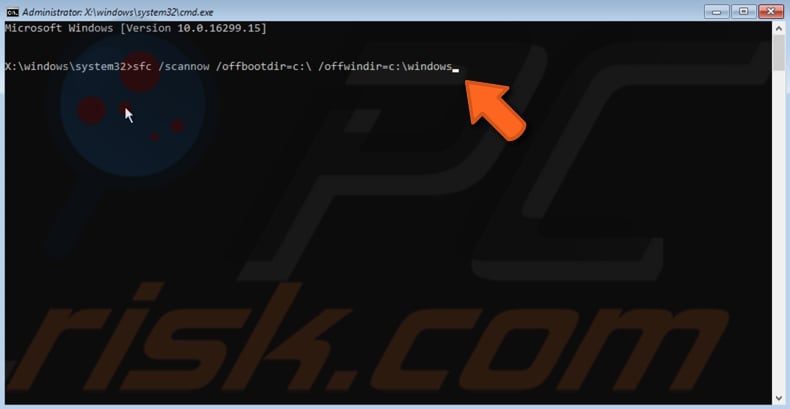
[Back to Table of Contents]
Run CHKDSK
There is a built-in Windows tool to check the integrity of disks. It examines disks and corrects many types of common errors. You can run this tool from the command line or through a graphical interface. In your case, you will need to run it through Command Prompt.
To run it from the command line, open Command Prompt again and type «chkdsk C: /f /r /x» command, press Enter to execute it. Replace the «c» letter with the Windows drive letter (the drive where your Windows operating system is installed).
If you get asked if you want to schedule the scan to be checked the next time the system restarts, type «Y» and press Enter. Restart your computer, and the CHKDSK utility should start checking your system for errors.
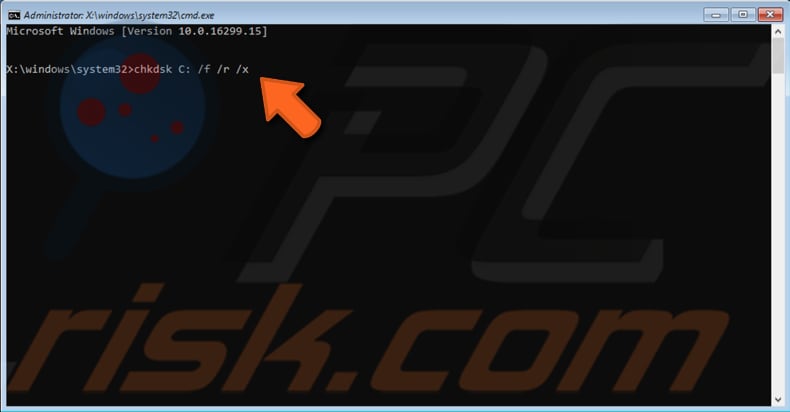
[Back to Table of Contents]
Perform System Restore
System Restore tool will remove all your recently installed apps, software, drivers, updates, etc. In other words, System Restore simply restores your system into a previous state, using its restore points.
A restore point is a collection of essential system files stored by System Restore on a given date and time. System Restore reverts everything to a saved restore point, but first, you must have one recorded. If a restore point does not exist on your computer, System Restore has nothing to revert to.
To use this tool, you must have created restore points. With a created restore point, this feature will bring your system back to the previous working state without affecting your files and data.
If you have any system restore points created before you started experiencing issues with the «There was a problem resetting your PC» error — you might be able to fix the problem by performing a System Restore.
To perform System Restore repeat the steps mentioned above until you reach the point where you have to select «Advanced options». In the Advanced options window, select «System Restore».

In the System Restore window, click «Next».

If there are restore points created, you will see a list of them. Mark the «Show more restore points» checkbox, and it should display more restore points.
Select the restore point that suits you best (depending on the time created etc.) and click «Next».

Confirm your restore point. Your computer will be restored to the state before the event detailed in the «Description» field.
If you are happy with your choice, click «Finish» and begin the system restore process.

[Back to Table of Contents]
Rename System and Software Registry
To rename the System and Software registry, you will need to use Command Prompt once again. Follow the previously mentioned steps and open Command Prompt.
Now you need to type these three commands and press Enter after each one:
cd %windir%\system32\config
ren system system.001
ren software software.001
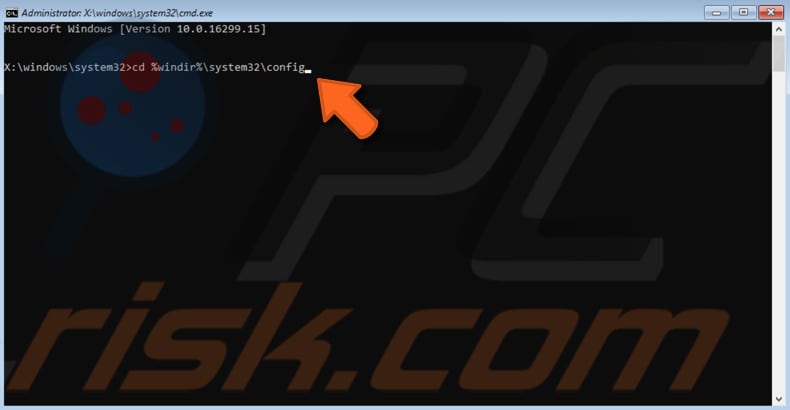
Close Command Prompt and click «Continue» to exit the Automatic Repair screen and continue to your Windows 10 operating system. See if this fixed «There was a problem resetting your PC» error.
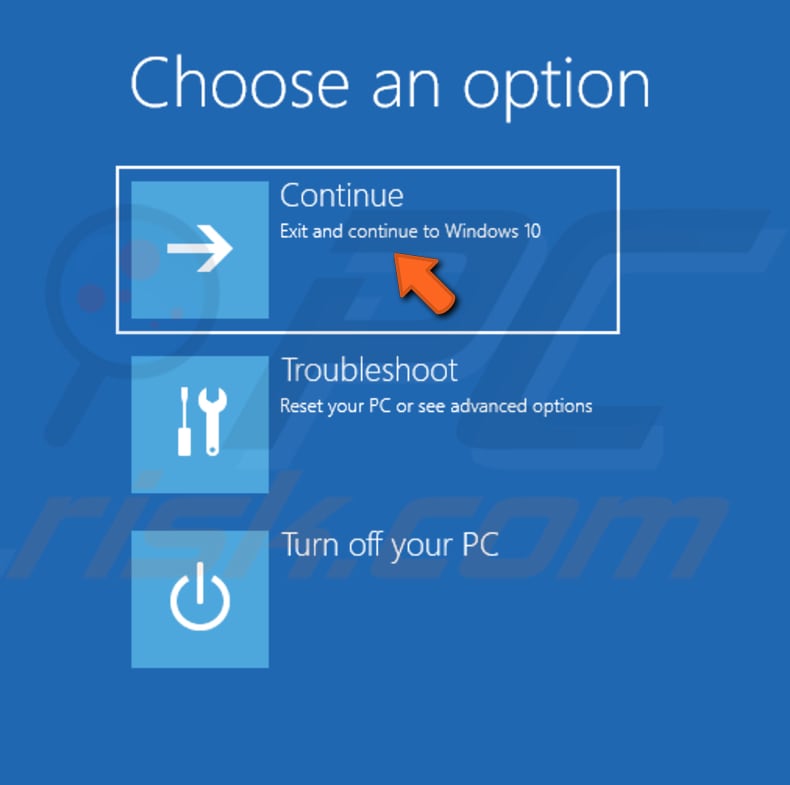
If none of these methods solved the problem for you, we recommend you simply reinstall your Windows 10 operating system.
To do so, use your installation DVD (or USB). Insert it and start your computer, press any key to boot from your installation media, format the drive, and reinstall Windows.
That’s it, we hope that our provided solutions were helpful and you were able to fix the «There was a problem resetting your PC» error.
If there is another method that solved the problem for you — do not hesitate to share it with us and with the others by leaving a comment in our comment section below.
[Back to Top]
